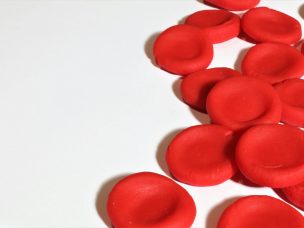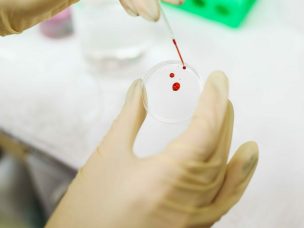GBT021601, a potent sickle hemoglobin polymerization inhibitor, reduces abnormal angiogenesis and ineffective erythropoiesis, which may help sickle cell disease patients benefit from cell-based therapy, according to the results of a preliminary study.
Damage from hypoxia results in abnormal blood vessel formation in sickle cell disease (SCD), which affects bone marrow and red blood cell production. Erythropoiesis is impeded by a dysfunctional bone marrow environment, which can also harm hematopoietic stem cells (HSCs). The strong polymerization inhibitor GBT021601 raises hemoglobin levels by up to 3 g/dL without causing iron overload or alloimmunization hazards that come with long-term red cell transfusions.
The study investigated the potential of GBT021601 treatment to improve sickle cell disease by restoring bone marrow health, reducing proangiogenic factors, and maintaining hematopoietic stem cell activity. This study was presented as a poster at the 65th American Society of Hematology Annual Meeting and Exposition.
Study Protocol and Characteristics
Humanized Townes HbSS SCD mice were divided into three cohorts (n = 8 per group: 4 male, 4 female) and fed either standard chow (control) or chow containing 0.1% or 0.2% GBT021601. The mice were phlebotomized and killed after 12 weeks. Spleens were taken and weighed. Centrifugation was used to obtain whole bone marrow from both tibias and one femur; the other was retained for later 3D confocal imaging. Flow cytometry examined the bone marrow for erythroid cell maturation (Annexin V, TER119, and CD44) and HSC markers (Lin, Sca-1, and c-kit). An immunoblot examination of peripheral plasma assessed hypoxia-induced signaling and angiogenesis markers (VCAM-1, VEGF-A, ANG-1, and -2).
Increased Hemoglobin Counts and Reduction of Spleen Size Noted
Hb increased by 3 g/dL on average after GBT021601 administration, and spleen weights decreased significantly (P = 0.0023 and P = 0.0015 for control vs. 0.1% and 0.2%, respectively). Mature red blood cells (RBCs) significantly outnumbered erythroid progenitors at all stages, according to flow cytometry analysis of the removed bone marrow.
No Significant Changes Observed in Hematopoietic Stem Cells
Dysfunctional bone marrow affects red blood cell production and harms HSCs. Despite GBT021601 treatment, HSC counts showed no notable differences between groups. Further research aims to assess GBT021601’s potential for normalizing bone marrow and protecting edited HSCs.
Changes in Angiogenesis Markers After Administration
VCAM-1 and ANG-1 levels are greater in HbSS mice than in HbAA mice. Treatment with GBT021601 reduced factors leading to pathogenic blood vessel growth. ANG-2 and VEGF-A levels, on the other hand, remained unchanged, with VEGF-A levels being similar between HbSS and HbAA mice.
Source
Hernandez, B. (2023, December 9). Evaluation of GBT021601 as a therapeutic agent to restore bone marrow health and effective erythropoiesis in a sickle mouse model. https://ash.confex.com/ash/2023/webprogram/Paper175022.html










